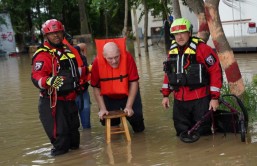NASA recently announced that the Lunar Atmosphere and Dust Environment Explorer (LADEE) have recently sent back its first pictures of the moon's surface.
LADEE was launched in September 2013, and it started orbiting the moon by October. Although the lightweight spacecraft does not have cameras to take images of the moon's surface, it has star trackers--an imager that helps it make its way through its orbit. The probe's main mission is to look into the moon's atmosphere, a collection of molecules and atoms which cover the moon. Aside from this, LADEE also helps in identifying and cataloging stars and sometimes, its star trackers catches a glimpse of the moon's surface.
Earlier this month, LADEE sent back five images, taken within one-minute intervals, which feature the northern hemisphere of the moon. Although the images were taken during the night, the star trackers were able to access enough light to highlight important elements such as the surface's mountain ranges and craters. According to NASA, the images were taken on February 8 as LADEE was gathering atmospheric measurements.
"Star tracker cameras are actually not very good at taking ordinary images," LADEE project manager at NASA's Ames Research Center in Moffett Field, Calif, Butler Hine said in a press release. "But they can sometimes provide exciting glimpses of the lunar terrain."
The first image showed a smooth-floored crater called Krieger. The second image featured Wollaston P, measuring around two and half miles, located near the horizon and some parts of the mountain Mons Herodotus. The third image caught a glimpse of a mountain range called Montes Agricola. The fourth picture provides a view of the Golgi, which is about four miles in diameter and Zinner, which has a diameter that measures around three miles. The last image showed the crater Lichtenberg A and Schiaparelli E, which are located in the basalt plains of Western Oceanus Procellarum.
NASA also announced that LADEE's mission will be extended by four weeks to be able to gather more data on its research mission. Once the probe runs out of fuel, it is expected to strike into the surface of the moon.








